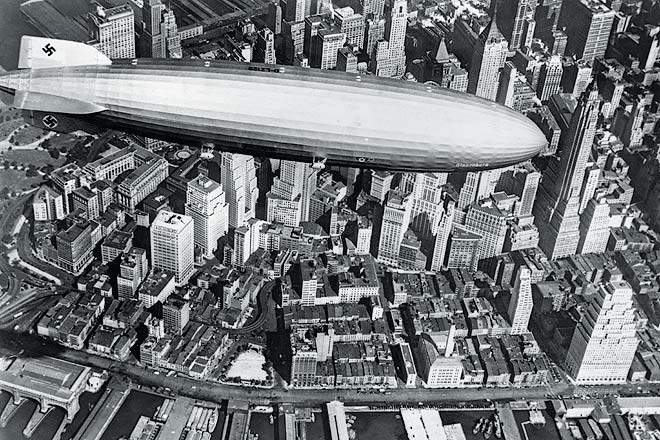When Count von Zeppelin designed his famous dirigible, he was not entirely sure what to do
Under the Nazi regime, the zeppelin was turned into a potent symbol for propaganda purposes, and the fiercely anti-Nazi Eckner was banned by Joseph Goebbels. A new ship, The Hindenberg, was commissioned. It was the largest zeppelin and was fitted to be powered by helium, which was non-flammable, as opposed to hydrogen. It was soon pressed into transatlantic service, alongside the Graf Zeppelin. This iconic picture of The Hindenberg was taken on its maiden flight in 1936 to the naval base at Lakehurst in New Jersey, as it flew over Manhattan.
It wowed the world, and proved to be a big boost for Nazi propaganda. However, due to a paucity of helium, it was filled with hydrogen. This resulted in disaster the following year, when the hydrogen caught fire and The Hindenberg came down in a terrible inferno at Lakehurst. Dirigibles soon became history, although they continue to excite the public imagination, especially in pop culture, such as the cult TV show Fringe, where dirigibles are the chosen mode of air transport in an alternate reality earth.
Hindenberg
Lakehurst
Manhattan


